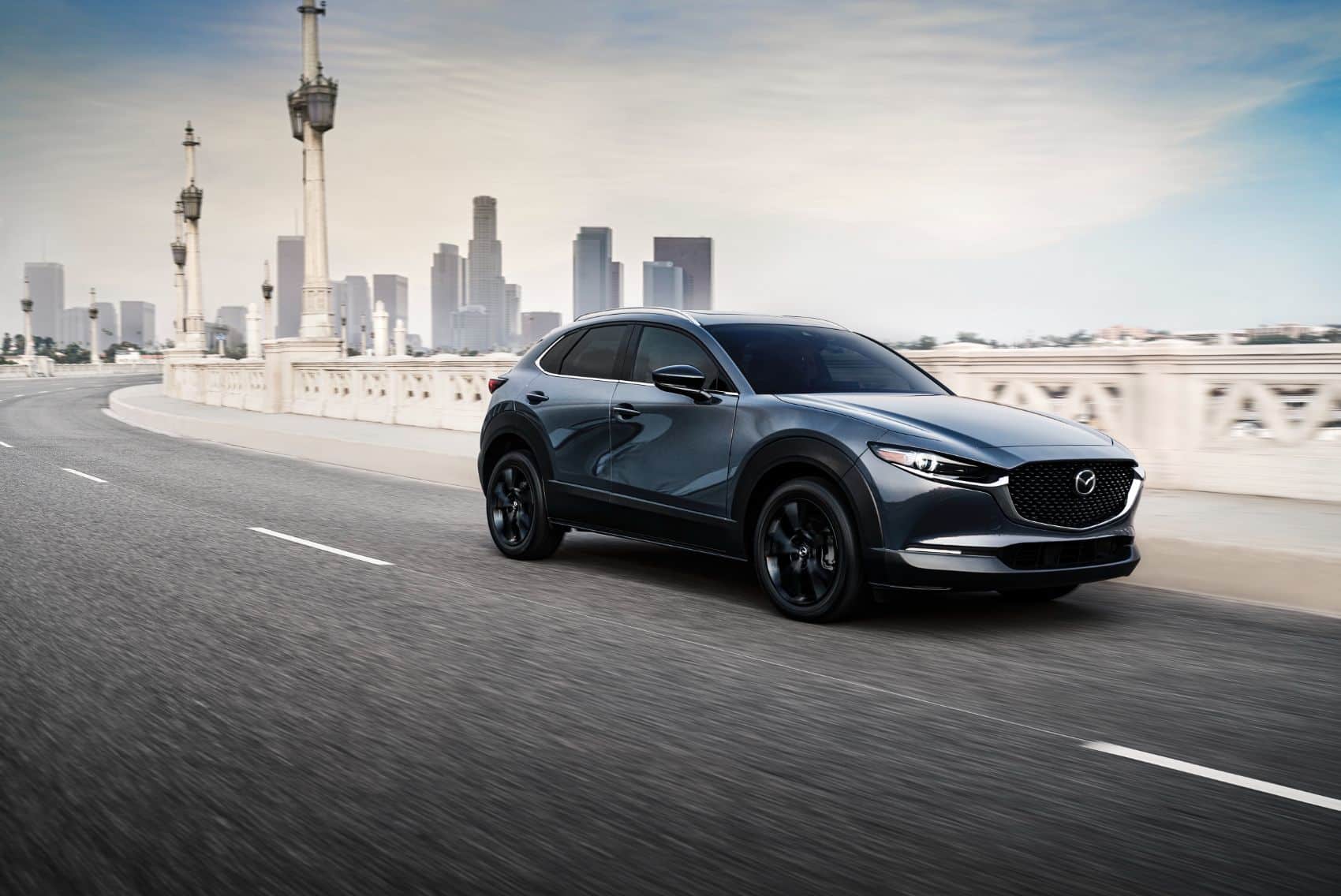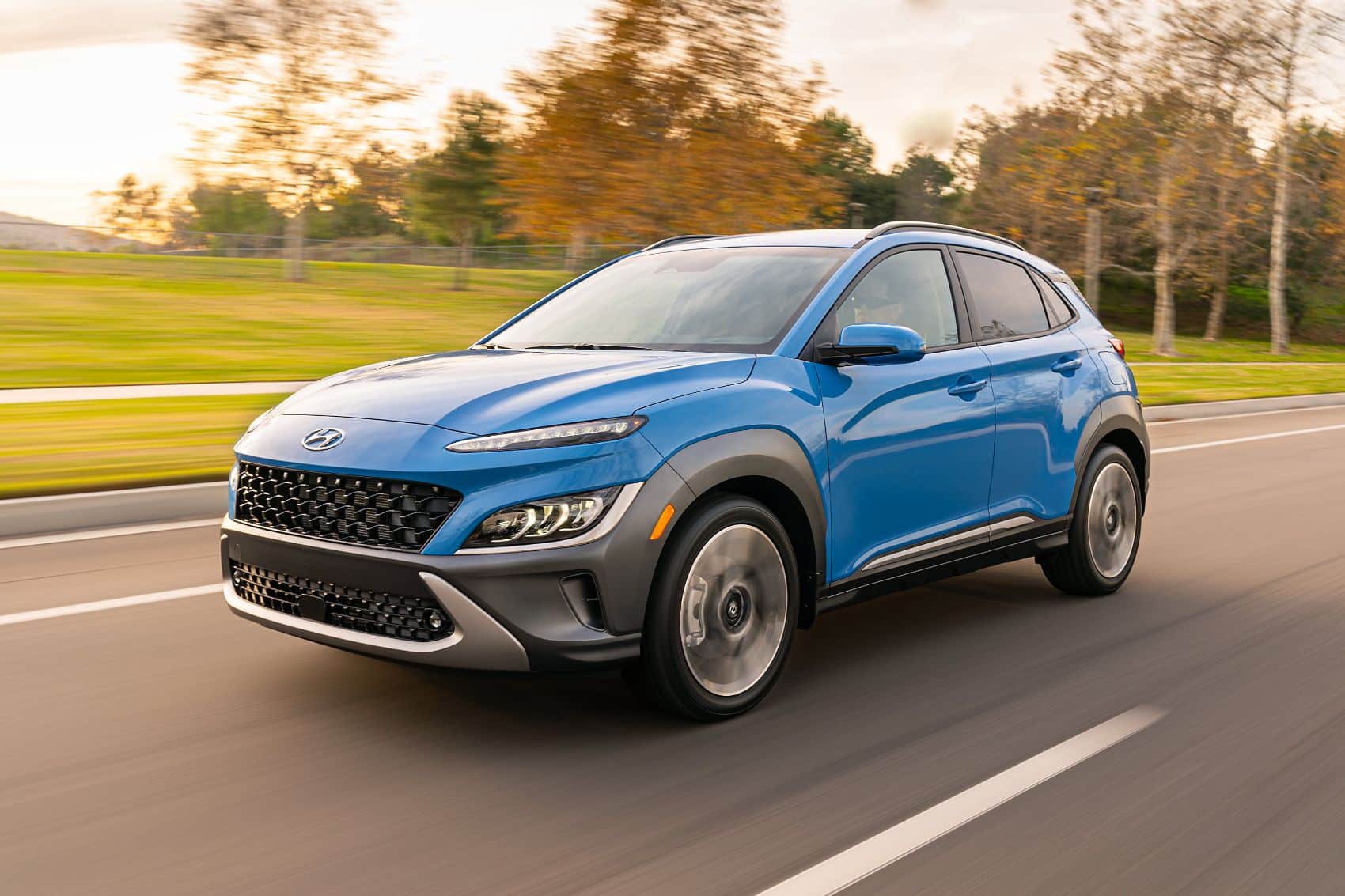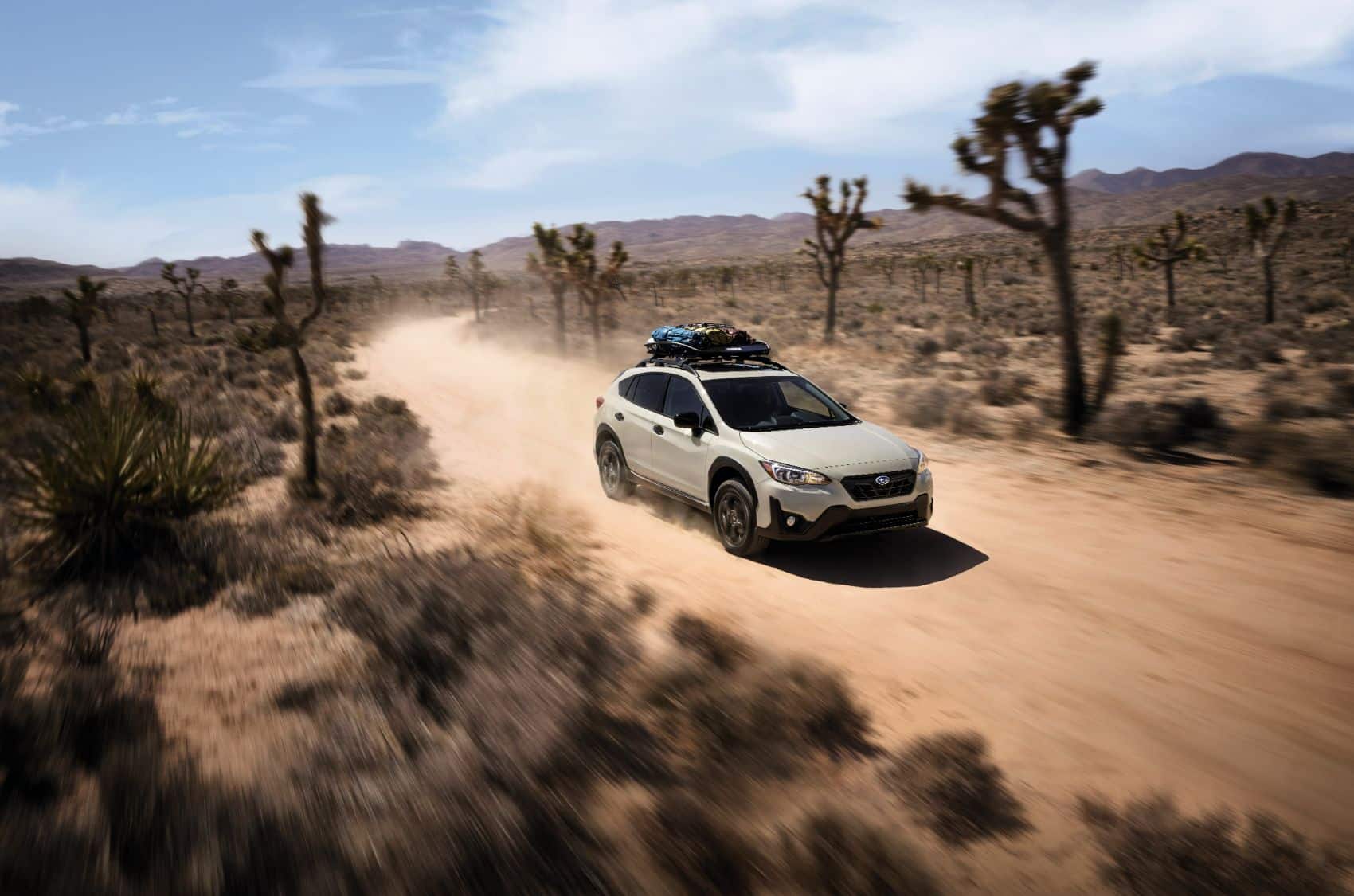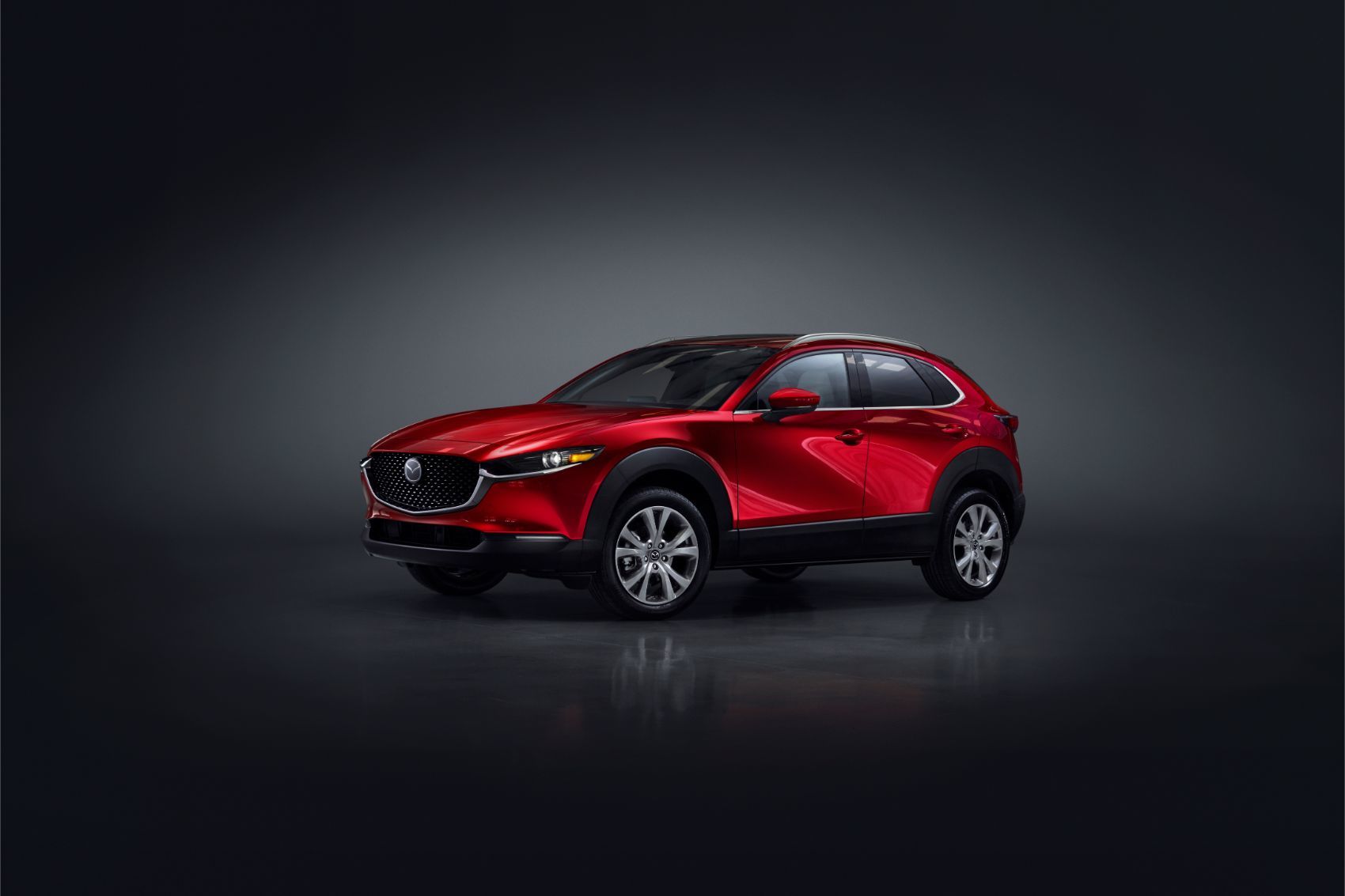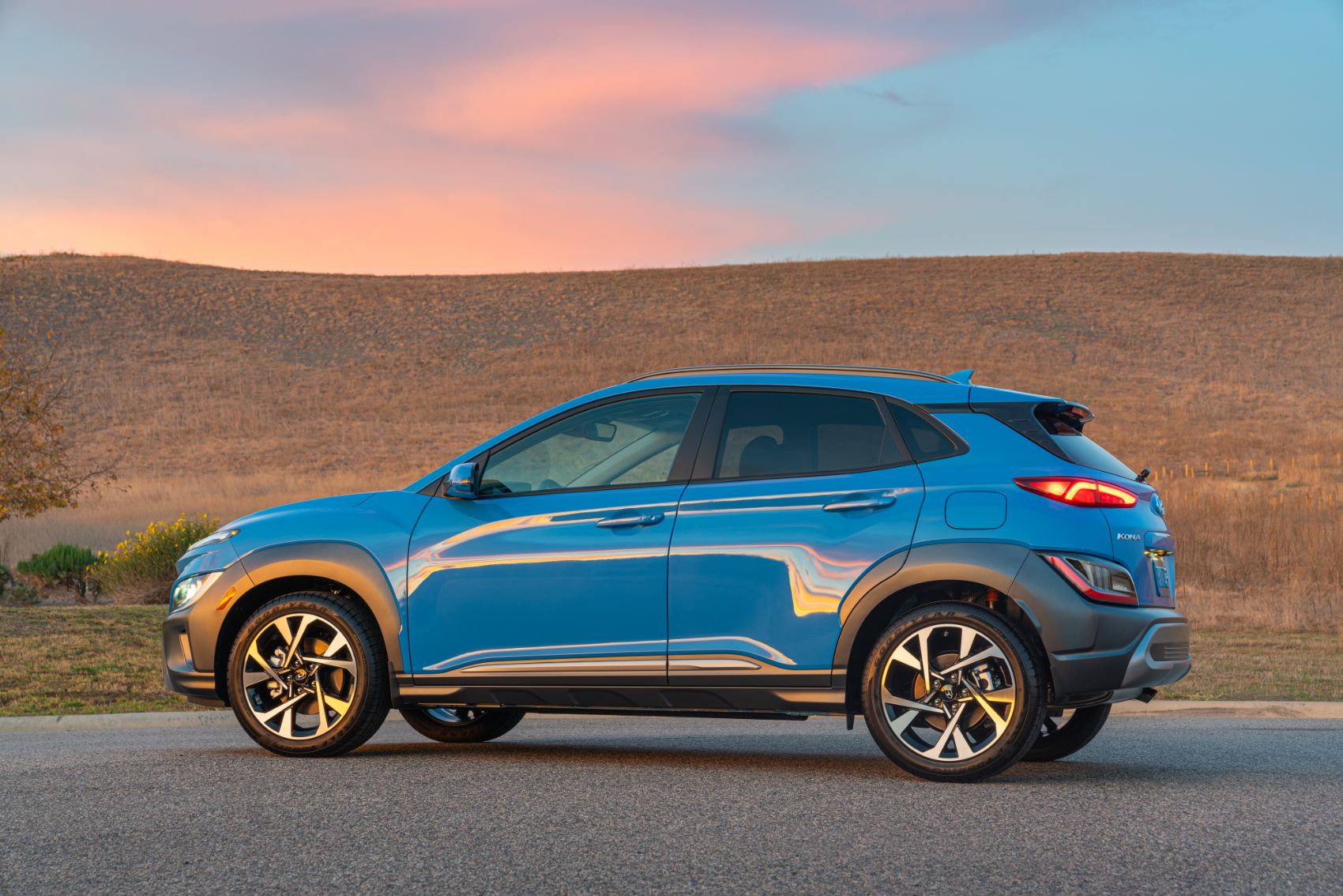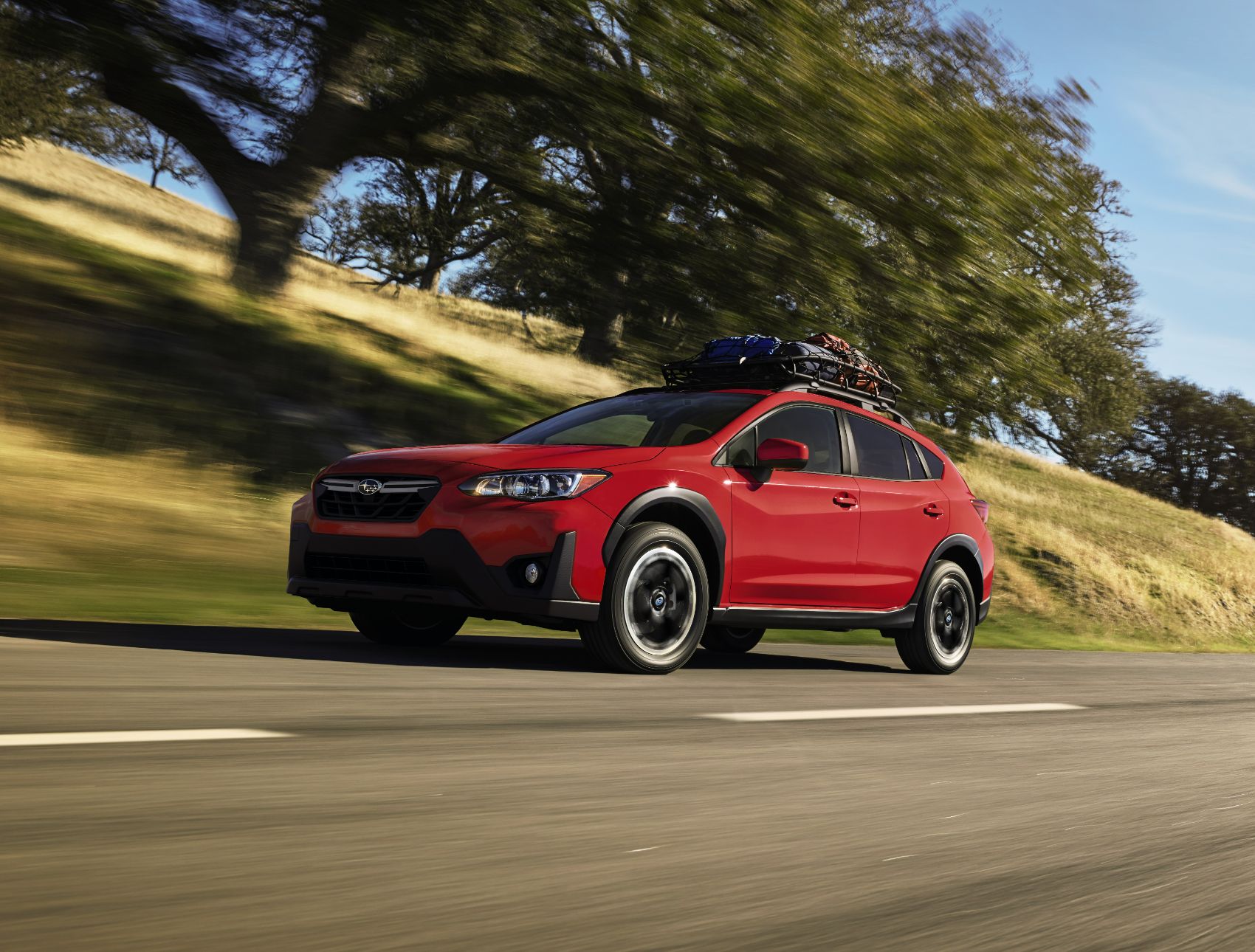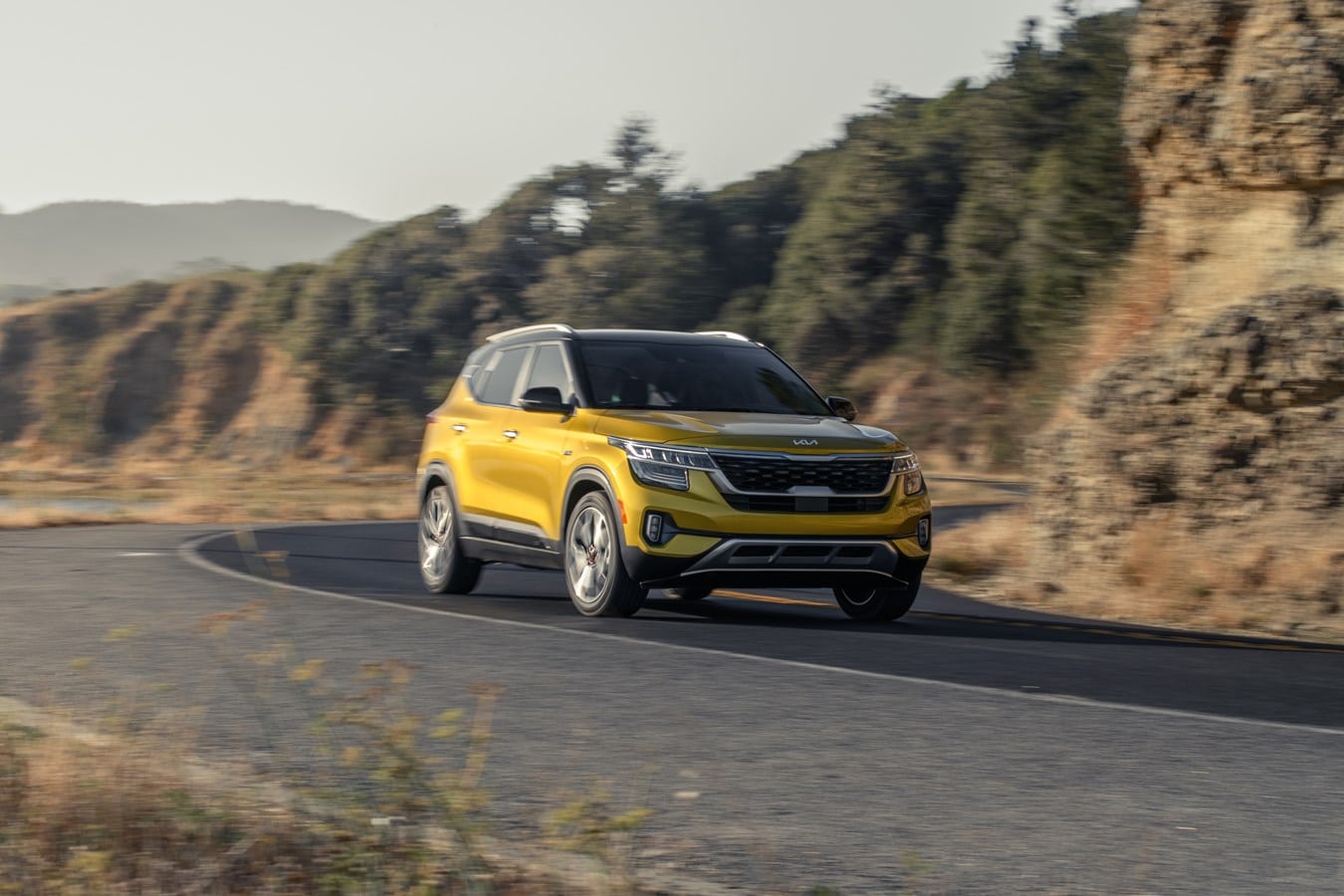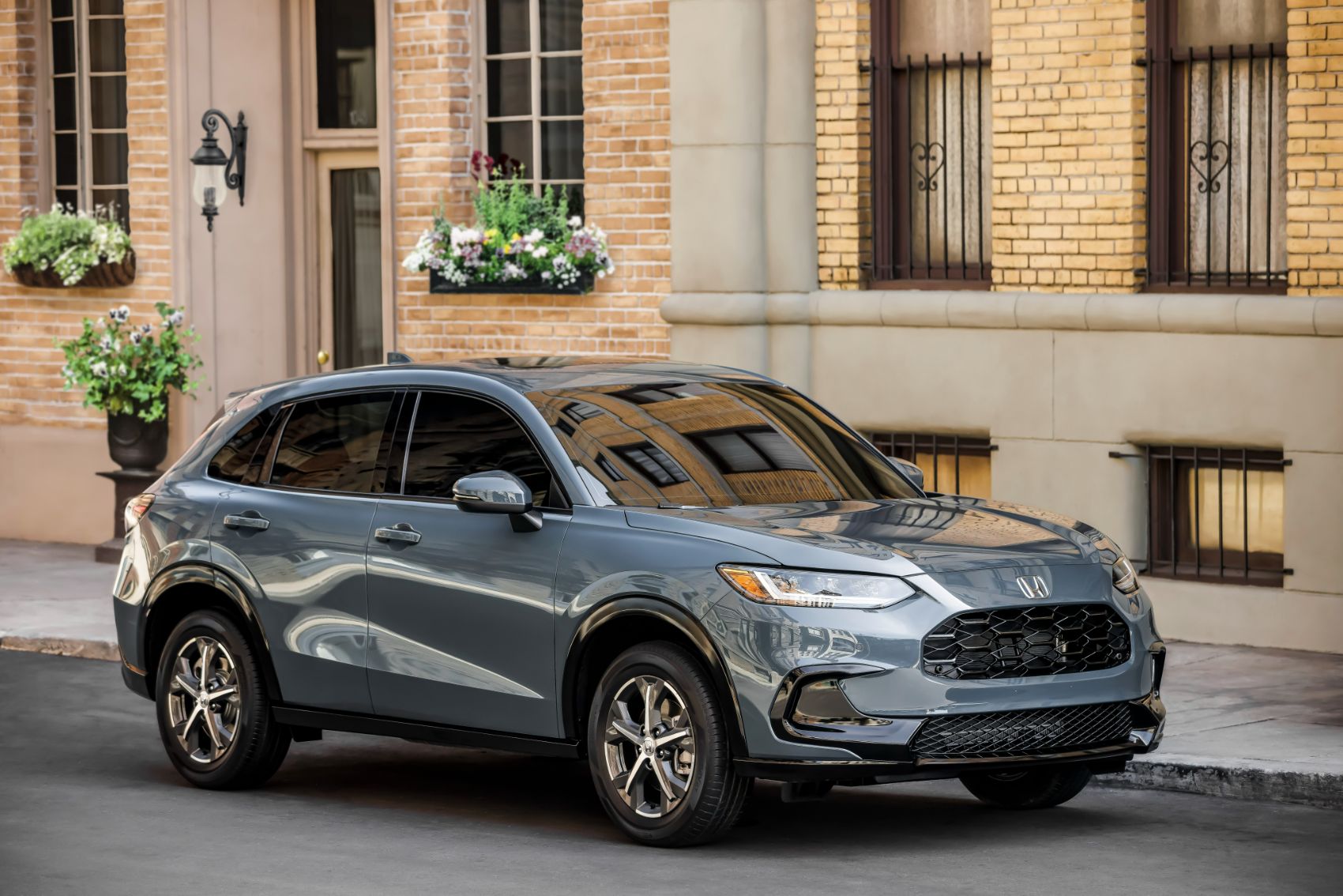There are more small SUVs and crossovers than ever before. What was once the realm of sedans now belongs to compact SUVs that deliver bang-for-the-buck features, roomy cabins, and mild off-road abilities for some. We rounded up the five best small SUVs and crossovers that deserve high praise for being capable all-rounders despite their compact platforms.
2023 Mazda CX-30
The Mazda CX-30 is a crossover version of the already excellent Mazda3 and is ideal for buyers who want something that feels like a sporty sedan or hot hatch.
First introduced in 2020, the latest CX-30 has a standard all-wheel drivetrain and an optional 2.5-liter turbocharged engine that pumps out up to 250 horsepower and 320 lb-ft. of torque with 93 octane fuel. Other standard features include LED headlights, an eight-speaker audio system, and 16-inch alloy wheels.
Pros
- Posh Cabin
- Standard AWD
- Powerful Turbo Engine
Cons
- Average Cargo Space
- Higher MSRP for Turbo Engine
Powertrain & Fuel Economy
The Mazda CX-30 has a standard 2.5-liter naturally-aspirated four-cylinder with 191 horsepower and 186 lb-ft. of torque. All CX-30s come with an all-wheel drivetrain and a six-speed automatic. However, the crème of the crop is the potent turbocharged engine in the CX-30 2.5 Turbo Premium and 2.5 Turbo Premium Plus. The blown four-banger churns out 250 horsepower and 320 lb-ft. of torque.
With those numbers, the Mazda CX-30 Turbo is among the quickest in the segment. It goes from zero to 60 mph in 6.4 seconds, while the non-turbo engine needs nine seconds to do the same.
The downside of having that much power is lower fuel economy. EPA-estimated fuel economy for the CX-30 Turbo is 22 in the city, 30 on the highway, and 25 combined. On the other hand, the naturally-aspirated 2.5-liter engine does better, with an EPA-estimated 26 in the city, 33 on the highway, and 29 combined.
Chassis & Suspension
The Mazda CX-30 has an ultra-high tensile strength steel chassis that lowers the vehicle’s weight without compromising rigidity. Moreover, it has McPherson struts in the front and a torsion beam suspension in the rear with spherical internal bushings. Mazda vehicles are renowned for their responsive and agile dynamics, and the CX-30 delivers while adding a generous dose of refinement to the mix.
Interior Layout: Classy but Smaller Cargo Area
The Mazda CX-30’s genuinely premium interior is a strong selling point, but the cargo space could be an issue if you frequently haul a lot of stuff. There is 20.2 cubic feet of storage with the rear seats up, and you can expand the capacity to 45.2 cubic feet by folding the second-row seats. Still, the CX-30 lags behind the Kia Seltos and Honda HR-V in cargo space.
Front and center is an 8.8-inch infotainment system with Apple CarPlay and Android Auto connectivity. But instead of having a touchscreen, the CX-30 has a rotary controller.
Mazda CX-30 Safety Ratings & Features
The Mazda CX-30 received a five-star overall safety rating from NHTSA in 2022 (the latest available data at the time of this writing). Meanwhile, the IIHS includes the 2022 CX-30 in its Top Safety Pick+ list with a Good rating in all six crash tests.
Every Mazda CX-30 has automatic high beams, forward collision mitigation, lane-keeping assist, a drowsy driver monitor, and adaptive cruise control. Higher trim models get more advanced driving aids like blind-spot monitoring, a surround-view camera, rear cross-traffic alert, and parking sensors.
Mazda CX-30 Warranty
Every CX-30 comes with a three-year/36,000-mile bumper-to-bumper warranty, a five-year/60,000-mile powertrain warranty, and a 24/7 roadside assistance program for three years or 36,000 miles. Options are available to extend the warranty on a CX-30.
2023 Mazda CX-30 Starting MSRP
The Mazda CX-30 is available in seven trim variants: Base ($24,225), Select ($26,675), Preferred ($29,825), Carbon Edition ($30,565), Premium ($32,775), Turbo Premium ($35,075), and Turbo Premium Plus ($36,675).
2023 Hyundai Kona
If the Mazda CX-30 is the sport-luxury contender on our best small SUVs list, think of the Kona as the flavor enhancer (or spices) in your favorite soup. The styling is an acquired taste, but it’s hard to fault the Kona for having a distinctive façade in a sea of homologated lookalikes – apart from the fact that Automoblog managing editor Carl Anthony has one.
“In May 2020, despite the pandemic, the Midwest Automotive Media Association and Hyundai were able to arrange individual test drive sessions for journalists and content creators, and the Kona was one of the vehicles on the list,” Anthony recalled. “I was also able to drive a Venue as part of that program, but the turbocharged Kona was much more fun and engaging.”
The 2022 Kona is fresh from a significant facelift and remains available in a high-performance N variant with a 276-horsepower turbocharged 2.0-liter engine. Front-wheel drive is standard across the board, while AWD is optional (except for the FWD-only Kona N).
Pros
- Fuel Economy
- Available AWD
- Affordable MSRP
Cons
- Road Noise
- Cargo Space
- Meh Base Engine
Powertrain & Fuel Economy
Lower trim levels receive a 2.0-liter four-cylinder engine with 147 horsepower, 132 lb-ft. of torque, and a continuously variable automatic (CVT). EPA-estimated fuel economy is 30 in the city, 35 on the highway, and 32 combined for front-wheel drive models. Despite being a fuel sipper, the Kona’s standard engine may feel lethargic under acceleration.
Meanwhile, the Kona N Line and Limited have a turbocharged 1.6-liter four-cylinder engine with 195 horsepower and 195 lb-ft. of torque. The turbo engine has a slick seven-speed dual-clutch automatic transmission (DCT), a gearbox that drew praises from our animal-loving managing editor.
“My local Ford dealer in downtown Detroit was great, and they did everything they could to resolve the transmission problems of my 2013 Focus,” Anthony said. “When it was clear the Focus was going to become a money pit, I looked seriously at a Kona in the summer of 2022. The seven-speed DCT automatic of my new Kona has been a welcome treat as it’s responsive and quick.”
EPA-estimated fuel economy for the 1.6-liter turbo engine with all-wheel drive is 27 in the city, 32 on the highway, and 29 combined. Front-wheel drive models come in a little higher at 29 in the city, 35 on the highway, and 32 combined.
Kona N: Powertrain & Fuel Economy
If you want a Kona that won’t back down from a day at the track, the Kona N is hard to beat. It has a 2.0-liter turbocharged four-cylinder with 276 horsepower and 289 lb-ft. of torque. The engine sends power to the front wheels via an eight-speed dual-clutch automatic transmission.
Although fun to drive, the Kona N will hit you at the pump. EPA ratings are 20 in the city, 27 on the highway, and 23 combined.
Chassis & Suspension
The Hyundai Kona has a MacPherson front and torsion beam rear suspension, but AWD variants have an updated multi-link rear suspension. Overall, it delivers a smooth and well-composed ride. “Hitting a bump at highway speeds will sometimes jostle the Kona a little bit,” Anthony said. “I’ve driven other small crossovers and SUVs where this happens too, so it’s not uncommon, but it’s something to be aware of.”
Interior Layout: Tech-Focused, Tight Cargo Area
Hyundai more than makes up for the Kona’s plasticky cabin with great tech and convenience features. The entry-level Kona SE gets an eight-inch infotainment touchscreen, a six-speaker audio system, and wireless Apple CarPlay and Android Auto. The Kona Limited has a 10.3-inch infotainment touchscreen and Harman Kardon audio system.
“There is some road noise to contend with on the interstate, but the heated seats, navigation, customizable driver profiles, and Harmon Kardon stereo are nice features for a small crossover in this price range,” Anthony said. “Despite the digital touchscreen, there are still physical buttons for the heat and AC, which I like.”
The Kona seats five adults in a pinch, but four will feel more at home inside the vehicle’s ergonomic cabin. Moreover, it only offers 19.2 cubic feet of storage with the rear seats in the upright position, and this could be an issue if you carry a lot of stuff.
Hyundai Kona Safety Ratings & Features
The 2023 Hyundai Kona received a five-star overall safety rating from NHTSA and a Good rating from the IIHS in crash safety tests.
All Konas have forward collision warning, lane departure mitigation, and lane-keeping assist. Higher trim models have blind-spot monitoring, rear cross-traffic alert, adaptive cruise control, and more.
Hyundai Kona Warranty
The Kona has a five-year/60,000-mile bumper-to-bumper warranty, a 10-year/100,000-mile powertrain warranty, and an anti-perforation warranty for seven years. Complimentary maintenance, which includes oil changes and tire rotations, goes for three years or 36,000 miles. Options are available for additional coverage for Hyundai vehicles.
2023 Hyundai Kona Starting MSRP
The Hyundai Kona is available in four trim variants: SE ($23,285), SEL ($25,095), N Line ($28,995), and Limited ($30,095). The high-performance Kona N starts at $35,995.
2023 Subaru Crosstrek
The Subaru Crosstrek has a rugged demeanor and standard AWD, which is great for buyers with active lifestyles. There’s also the Crosstrek Hybrid that provides up to 17 miles of all-electric range. It’s not hard to discern why the Subaru Crosstrek deserves a place on our best small SUVs list. It’s one of the few that offers an optional six-speed manual. It drives like a car despite its SUV pretensions, thanks to its Impreza Hatchback architecture. Best of all, the base Crosstrek starts under $25,000.
Pros
- Standard AWD
- Comfortable Ride
- Ground Clearance
Cons
- Tight Cargo Space
- Lethargic Base Engine
Powertrain & Fuel Economy
The Subaru Crosstrek has a standard 2.0-liter naturally-aspirated Boxer four-cylinder that generates 152 horsepower. Meanwhile, the Crosstrek Sport and Limited receive a 2.5-liter Boxer four-cylinder with 182 horsepower and 176 lb-ft. of torque. All Crosstreks have a standard all-wheel drivetrain with a continuously variable automatic (CVT), but there’s an available six-speed manual for the Base and Premium models.
The standard 2.0-liter returns an EPA-estimated 28 in the city, 33 on the highway, and 30 combined. By contrast, the slightly larger 2.5-liter (the engine we recommend) has an EPA-estimated rating of 27/34 city/highway and 29 combined. The extra power of the 2.5-liter Boxer engine is enough to offset the minor fuel economy difference.
All manual transmission models have the 2.0-liter engine. EPA-estimated fuel economy for the manual Crosstrek is 22 in the city, 29 on the highway, and 25 combined.
Chassis & Suspension
The Subaru Crosstrek has a four-wheel independent suspension with a double wishbone setup for the rear. The Crosstrek is smooth and silent like any modern Subaru, but the taller ride height means more body roll when driving around bends and corners. Despite its outdoorsy countenance and all-wheel grip, the Crosstrek is not a serious off-roader, but you won’t have a problem with things like sand, snow, loose gravel, or grass.
Interior Layout: Good Visibility & Tech Features
The Subaru Crosstrek offers excellent outside visibility with its taller seating position. Although the roomy cabin provides seating for up to five adults, available cargo space in the rear could be an issue. The Crosstrek has 20.8 cubic feet of space behind the rear seats, which expands to 55.3 cubic feet with them folded. These figures are better than the Kona and CX-30 but behind the Seltos.
Goodies like a leather-wrapped steering wheel, heated front seats, adaptive headlights, and an eight-inch touchscreen are standard across the model range. Lower trim variants receive a four-speaker audio system and a 6.5-inch infotainment touchscreen with Apple CarPlay and Android Auto connectivity.
Subaru Crosstrek Safety Ratings & Features
Every Crosstrek leaves the factory with the Subaru EyeSight package. It includes adaptive cruise control, lane-keeping assist, forward collision mitigation, and hill descent control, while other trims receive blind-spot monitoring and rear cross-traffic alert.
The 2023 Subaru Crosstrek received a five-star overall safety rating from NHTSA. Like the Mazda CX-30, the 2022 Crosstrek is an IIHS Top Safety Pick.
Subaru Crosstrek Warranty
The Crosstrek leaves the factory with a three-year/36,000-mile bumper-to-bumper warranty and a five-year/60,000-mile powertrain warranty. Options are available to extend the coverage on any Subaru vehicle, including the Crosstrek.
2023 Subaru Crosstrek Starting MSRP
The Subaru Crosstrek is available in six trim variants: Base ($24,870), Premium ($26,220), Special Edition ($27,970), Sport ($29,220), Limited ($30,720), and Hybrid ($38,070).
2023 Kia Seltos
Credit goes to the Hyundai Kona for being the quirkiest-looking of the bunch. Then again, the Kia Seltos is preferable if you want your crossover to have the styling cues of a proper SUV.
Depending on the buyer, this factor could be good or bad, but its mini-SUV countenance also comes with an SUV-like driving feel. On the plus side, the Seltos is bigger than the Hyundai Kona and offers a spacious interior with plenty of cargo room. The base Seltos S has front-wheel drive and an optional all-wheel drivetrain, while the rest have standard AWD.
Pros
- Exterior Styling
- Premium Interior
- Good Cargo Space
Cons
- Firm Ride
- Road Noise
- Lackluster Base Engine
Powertrain & Fuel Economy
The Kia Seltos is available in two gasoline engine flavors. The first is a naturally-aspirated 2.0-liter four-cylinder with 146 horsepower and a continuously variable automatic (CVT). EPA ratings, with front-wheel drive, are 29/35 city/highway and 31 combined. By contrast, all-wheel drive models return an EPA rating of 27/31 city/highway and 29 combined.
Although we prefer the turbocharged 1.6-liter engine, it’s restricted to the Nightfall Edition and SX, which command a higher starting MSRP than the other trim levels. The turbo engine delivers 175 horsepower, 195 lb-ft. of torque, and the benefit of an all-wheel drivetrain. EPA ratings are 25/30 city/highway and 27 combined.
Chassis & Suspension
Riding on a modified architecture shared with its Hyundai Kona and Kia Soul cousins, the Seltos has a MacPherson front and multi-link rear independent suspension. While the underpinnings may sound sporty, the higher ground clearance gives the Seltos a calm demeanor on the road.
Interior Layout: Cargo Space is King
The Kia Seltos has accommodations for five adults and cargo with its lengthier wheelbase, translating to more room for both. It offers one of the roomiest trunks in the compact SUV segment, with 26.6 cubic feet with the rear seats in the upright position. Meanwhile, folding the rear seats reveals 62.8 cubic feet of room.
The base Kia Seltos includes a comprehensive list of features like an eight-inch infotainment touchscreen, Apple CarPlay and Android Auto connectivity, a six-speaker audio system, automatic headlights, and more.
Kia Seltos Safety Ratings & Features
The 2023 Kia Seltos earned 4 out of 5 stars in NHTSA’s overall safety rating. In addition, it joins the Mazda CX-30 and Subaru Crosstrek as an IIHS Top Safety Pick.
Every Kia Seltos is standard with lane-keeping assist, lane departure warning, forward collision warning, and a driver attention warning system. Other driving aids like blind-spot warning, rear cross-traffic alert, and adaptive cruise control are standard on higher trim levels.
Kia Seltos Warranty
The Seltos comes with a 10-year/100,000-mile powertrain warranty, a five-year/60,000-mile bumper-to-bumper warranty, a five-year/100,000-mile anti-perforation warranty, and a five-year/60,000-mile roadside assistance plan. Despite lengthy coverage from the factory, options are available to extend the warranty of any Kia vehicle.
2023 Kia Seltos Starting MSRP
The Kia Seltos is available in five trim variants: LX ($24,135), S ($24,185), EX ($27,435), Nightfall Edition ($28,335), and SX ($29,635).
2023 Honda HR-V
The HR-V is a far cry from its Fit-based predecessor. It’s about nine inches longer and has a two-inch longer wheelbase than the old HR-V, all thanks to its new Civic underpinnings. The lengthier body means generous room for occupants and over 50 cubic feet of cargo space with the second-row seats folded down. Furthermore, we like the new HR-V’s premium-feeling interior with softer touch points and higher quality materials than before.
Pros
- Cargo Space
- Roomy Cabin
- Reserved Styling
Cons
- Uncomfortable Seats
- Lackluster Powertrain
Powertrain & Fuel Economy
The HR-V has a 2.0-liter naturally-aspirated four-cylinder with 158 horsepower and 138 lb-ft. of torque. The numbers may seem enough on paper (with only two passengers on board), but the engine struggles with a load of people and cargo. The continuously variable automatic (CVT) is more to blame for this predicament, but the engine’s power is adequate within city limits. The HR-V is standard with front-wheel drive, while all-wheel drive is optional.
Front-wheel drive models have an EPA rating of 26/32 city/highway and 28 combined. All-wheel drive models are slightly lower at 25/30 city/highway and 27 combined.
Chassis & Suspension
According to Honda, the front MacPherson struts and multilink rear suspension deliver a sporty driving feel. While that may be true, the biggest selling point for us is the HR-V’s Advanced Compatibility Engineering (ACE) architecture. ACE is Honda’s proprietary high-strength steel body design. It includes a network of front frame structures to absorb and deflect the energy created during a frontal collision.
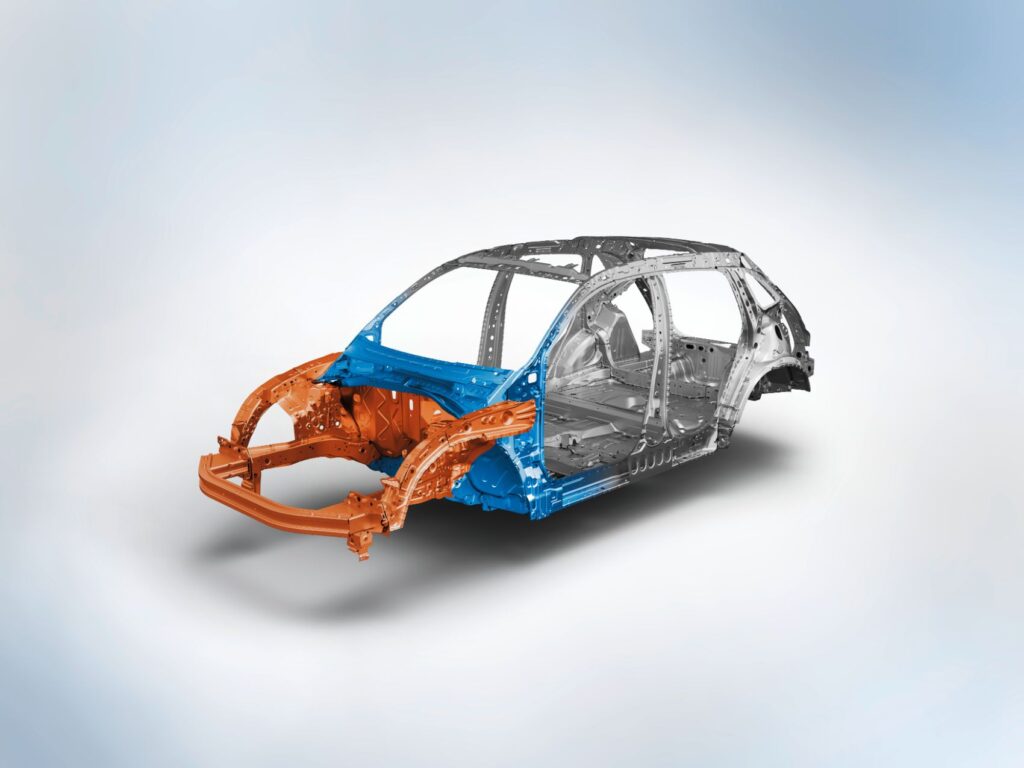
Interior Layout: Tech-Focused & Spacious
Thanks to its new Civic architecture, the HR-V is among the most spacious on our list of the best small SUVs. It offers 24.4 cubic feet of cargo room with the rear seats up and 55.1 cubic feet when folded down. Moreover, the wide-opening doors make it easier to jump in and out or install a child seat.
Standard features include automatic climate control, push-button start, LED headlights, a seven-inch touchscreen, Apple CarPlay and Android Auto connectivity, and a four-speaker audio system.
Honda HR-V Safety Ratings & Features
The Honda HR-V is an all-new vehicle and has yet to be evaluated by NHTSA at the time of this writing. However, it recently joined the Mazda CX-30, Subaru Crosstrek, and Kia Seltos as an IIHS Top Safety Pick+ for 2023.
The 2023 Honda HR-V is standard with adaptive cruise control, lane departure mitigation, and forward collision mitigation. More advanced safety features like blind-spot monitoring, rear cross-traffic alert, and parking sensors are standard on higher trim levels.
Honda HR-V Warranty
The HR-V leaves the factory with a three-year/36,000-mile bumper-to-bumper warranty, a five-year/60,000-mile powertrain warranty, and a five-year/unlimited mileage rust perforation warranty. Options are available for additional coverage for all Honda vehicles.
2023 Honda HR-V Starting MSRP
The Honda HR-V is available in three trim models: LX ($25,045), Sport ($27,145), and EX-L ($29,145).
Best Small SUVs & Crossovers: Conclusion
It’s not hard to see why SUVs and crossovers have become the norm for a majority of buyers. Most of the time, crossovers are more practical than a conventional sedan while offering similar levels of comfort and tech features – some can even take you beyond smooth tarmac. And while the market has no shortage of options, this list of the five best small SUVs and crossovers is a good place to start when shopping for a new vehicle.
Alvin Reyes is an Automoblog feature columnist and an expert in sports and performance cars. He studied civil aviation, aeronautics, and accountancy in his younger years and is still very much smitten to his former Lancer GSR and Galant SS. He also likes fried chicken, music, and herbal medicine.



